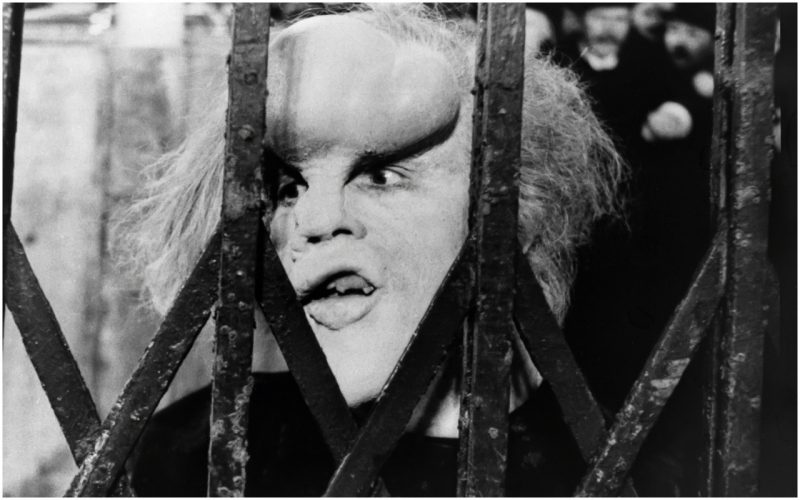In 1980, talented director David Lynch filmed the story of Joseph Merrick, a heavily disfigured man who suffered years of mistreatment and abuse in a society that viewed him as a freak. In the film, Merrick is rescued by Dr. Frederic Treves, a Victorian surgeon who saw past the monstrous facade to find the sensitive soul of an intelligent individual.
Starring Anthony Hopkins and John Hurt in the respective roles of Dr. Treves and Merrick, The Elephant Man earned many nominations for Academy Awards, including for Best Picture, Best Director, Best Screenplay, and Best Actor in a Leading Role for John Hurt.
The film ended up winning no Academy Awards, but it did win other prizes and received widespread recognition, and today is considered a film classic. Lynch managed to bring to the screen a tragic and moving story in the best of ways, illuminating Joseph Merrick’s short existence in this world, and by doing so, delivering a profound and humane story of dignity and tolerance in the process. A story everyone should know about.
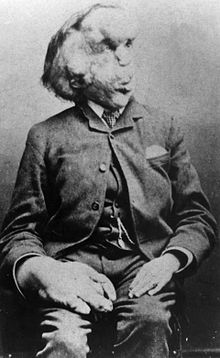
Born as a seemingly healthy baby on August 5, 1862, Joseph Carey Merrick began to display symptoms of a congenital disorder before the age of two when all of a sudden his body started to swell. With no warning whatsoever, the mother of a previously healthy baby was now holding a loved one covered with disfiguring tumors that grew all over his skin.With no clue to what was going on, she was forced to witness how different parts of his body were growing asymmetrically out of proportion.
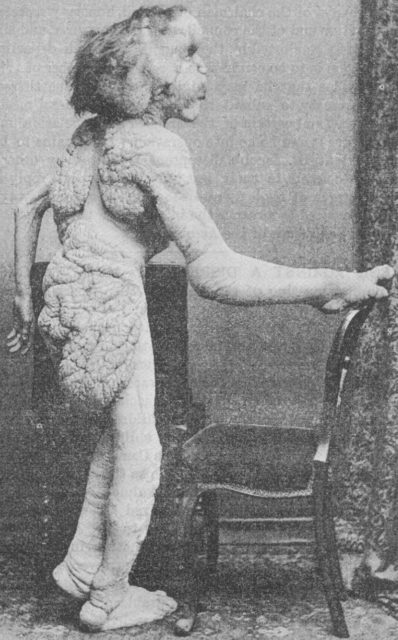
His mother, Mary Jane, assumed it was the result of her being startled by a raging elephant that assaulted her during her pregnancy. For her son’s disfiguring skin patches were grayish in color, like the color of an elephant. Despite everything, Joseph had a relatively healthy childhood, at least up until his head grew significantly larger in size and his right hand deformed to the extent that it was no longer usable. It was then that Mary and her husband, Joseph Rockley Merrick, knew for certain that their son could not attend a normal school in their hometown of Leicester and most importantly he was in desperate need of a special care.
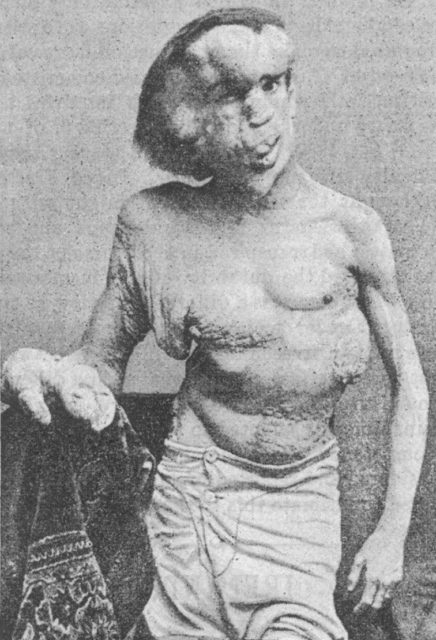
Sadly, his mother passed away when he was only 11 years old, and with only a devastated father who knew nothing of how to take care of him, Merrick was forced to work menial jobs to survive. Taking into account the deformities he had, jobs he could acquire were scarce. The only thing that he could find was rolling cigars in some dark factory basement, tucked far away from sight. This, too, didn’t last very long, for rolling with only one hand proved to be a hard challenge.

Stricken with poverty and beaten by his father every day that he came home empty-handed, the boy finally ran away from home and joined the only place that would gladly take him with open arms: the circus. “Come, come, hurry up. Get around folks and see the Elephant Man!” Depicted as half man, half elephant, poor Joseph was displayed as a freak in front of vast crowds in the music hall in Leicester. For years he and his disfigurement were the main attraction of the Gaiety Palace of Varieties, where he was valued as a living freak and not a 17-year-old boy who saw nothing but misery in his life.
Fortunately for him, London was keen for the act, so he and Sam Torr, the owner of the music hall, director of the show, and a manager of his who claimed to have sole ownership of Joseph, moved their act to the grim streets of the city. Here, the elites in English science upon learning of his existence craved to know more about his condition, and perhaps write a case study of the caped elephant man who walks the streets in London.
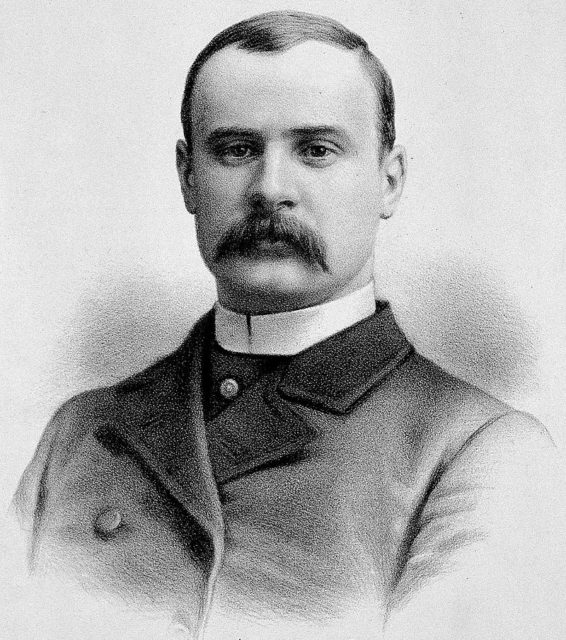
Among the intrigued ones was Dr. Frederick Treves,and he offered Merrick a way out and a life of care far from the harsh pavement. But it wasn’t that easy, for as we mentioned before, he was “owned” by his manager, and no businessman in his right mind would be willing to let go of his investment so easily. However, London did tire of the the Elephant Man. His manager, now seeing his investment not generating profit anymore, beat him and stripped him of any possession and savings he had, leaving a helpless soul to rot alone in Belgium, far away from a place where someone could even understand his cry for help.
Somehow he found his way back to England and to the door of the only man who made him a promise to help, Dr. Treves.
The doctor welcomed him. A series of examinations was arranged at the hospital in London, only to discover that Merrick’s state was much worse than thought. By this time his head was so enlarged that it was unimaginable how his shoulders were keeping it up. His body was almost completely covered with tumors, while his right hand, measuring 12 inches at the waist, was more of a burden to him than anything else. He was in desperate need of medical attention, for he was literally rotting, inside out.
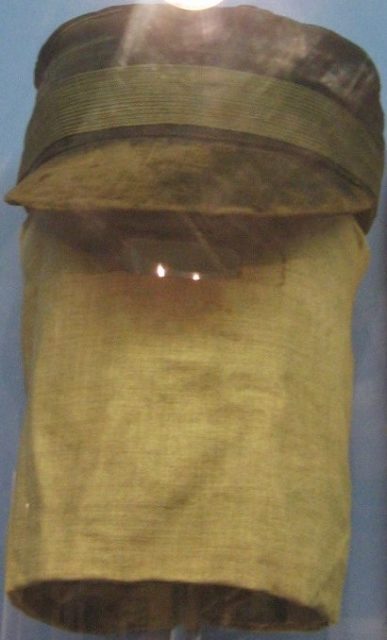
In desperate need of funds, Treves and the chairman of the hospital wrote a public plea asking for financial support from anyone willing, and surprisingly there were more than a few willing. Among them was the Princess of Wales, Alexandra, after whom many from the aristocracy made donated. With this help, he found a permanent home for the first time in a decade and a real friend to talk to for the first time in his life. Yet, as cruel as life can sometimes be, shortly after he settled in and began to be treated as a human being, Joseph Merrick was found dead in his hospital bed on April 11, 1890.
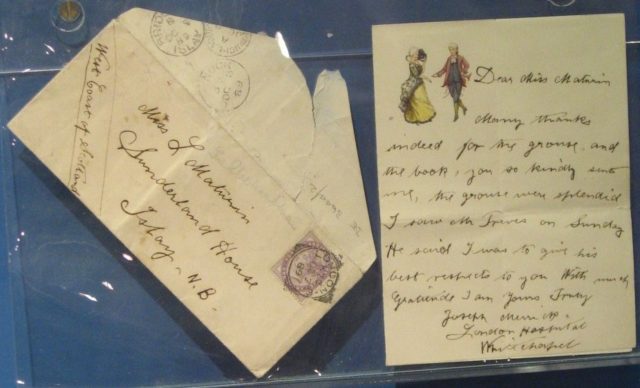
Years later it was confirmed that he passed away from what was most feared. His head fell awkwardly during his sleep, which severed his spine and killed him. As for his state, it is believed he was suffering either from Proteus syndrome or neurofibromatosis, for he was displaying an onset of symptoms of both.
Read another story from us: The heartbreaking story of the Llewelyn Davies boys who didn’t want to grow up and inspired J.M. Barrie’s Peter Pan …
During his 27 years of misery, Merrick was often found quoting a line written by Isac Watts: “Tis true, my form is something odd, But blaming me is blaming God.” While his short-lived life was marked by cruelty and indifference, his life story was told for decades to come, teaching a lesson of compassion. For he might have lived just a couple of years as a real human being, but he did experience them, helped by a friend.
